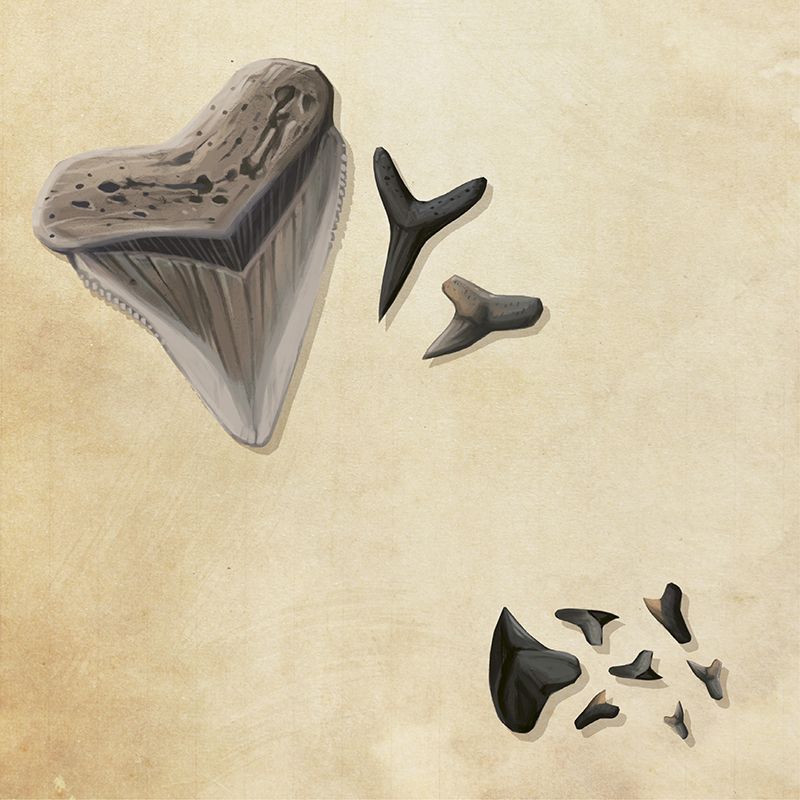Anywhere sharks have swum, their teeth are sure to be found. And Lowcountry rivers and beaches provide bountiful hunting grounds for the predators’ sharp fangs, from the great megalodons of the early Pleistocene era to today’s blue, tiger, and hammerhead varieties. It’s no wonder collectors and hobbyists alike search for these fascinating fossils

Mega Bite - The prehistoric megalodon (meaning “big tooth”) was the biggest predator fish ever known at nearly 60 feet long and with teeth as big as ax heads, topping out at nearly seven inches. Divers with a fossil hunting hobby permit regularly find megalodon teeth in Lowcountry rivers. Sought after by collectors, a tooth in excellent condition can fetch thousands of dollars, though CofC geology professor Robert Boessenecker encourages fossil hunters to donate their finds to further scientific discovery.
Fossil Fuels - It was the calcium phosphate found in fossils like shark teeth that supported the prosperous phosphate mining industry that flourished in the Lowcountry during the late-1800s and early 20th century.
Jaws - Not only do sharks have the most powerful mouths of all animals, both the upper and lower mandibles move when they capture and eat prey. The shark then throws its head back and forth, which allows a piece to be torn loose and swallowed whole. Since almost all sharks are carnivores, most of the teeth found are sharp, pointed, and triangular-shaped.
Slice & Dice - The combination of pointed lower teeth with triangular upper teeth are especially useful for helping sharks capture and eat their prey. Each tooth in a shark’s mouth is designed for the task at hand. Dense, flattened teeth are used for crushing; sharp, needle-like teeth for gripping; and the serrated triangular upper teeth do the cutting.
Loose Tooth - Sharks have several rows of teeth that are continually being shed (a bull shark can have 50 rows of teeth), and one single shark can grow and lose more than 20,000 teeth in its lifetime. This makes for plenty to collect—from the shiny black fossilized teeth that date back millions of years to a glistening white tooth from the shark that swam by last week.
Fangs for the Memory - Sharks are rightfully called “living fossils” with a history that goes back at least 400 million years. Modern forms of sharks began to evolve during the Jurassic Period, the time of the giant dinosaurs. The most commonly found fossilized shark teeth date to the Cenozoic era (the last 66 million years).
Holy Molar! - The first mention of fossilized shark teeth dates to Ancient Rome’s Pliny the Elder (circa 79 A.D.) who believed they were objects that fell from the heavens, especially during a lunar eclipse. In the 1400s, they were believed to be the petrified tongues of dragons and snakes. These “tongue stones,” were thought to be a cure for poisonous snake bites. Superstitious noblemen considered them good luck charms and wore them as pendants.